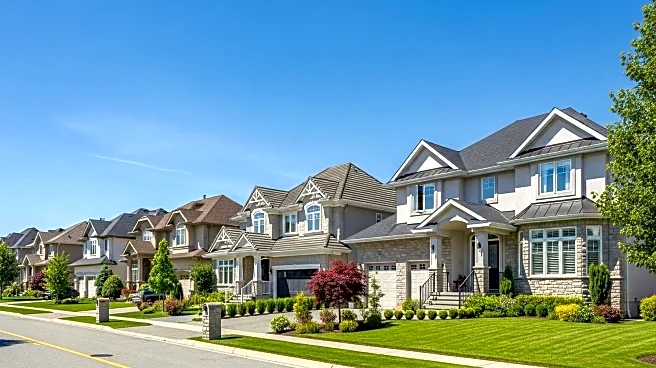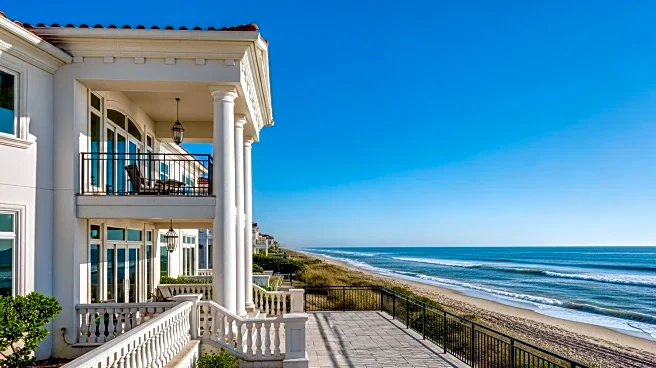What is the story about?
What's Happening?
A recent analysis by LendingTree has identified Nantucket, Massachusetts, as the most expensive small city in the U.S., with a median home value of $1.4 million. The list includes cities with populations between 10,000 and 50,000, many of which are known for their affluent residents and seasonal appeal. Vineyard Haven, also in Massachusetts, ranks second with a median home value of $1.1 million. Other cities on the list are popular for their proximity to ski resorts or unique local economies, such as Jackson, Wyoming, and Los Alamos, New Mexico. The report highlights the diverse factors contributing to high home values in these small cities, including tourism, local industries, and educational institutions.
Why It's Important?
The high home values in these small cities reflect broader trends in the U.S. real estate market, where desirable locations with unique attributes command premium prices. This trend is significant for potential homebuyers and investors, as it underscores the importance of location and local amenities in real estate valuation. The report also highlights the economic impact of tourism and specialized industries, which can drive demand and influence housing costs. Understanding these dynamics is crucial for stakeholders looking to navigate the complexities of the real estate market.
What's Next?
As these small cities continue to attract interest, real estate developers and local governments may explore strategies to manage growth and maintain affordability. This could involve initiatives to balance development with preservation of local character and resources. The trend may also prompt discussions on housing policy and infrastructure, as communities seek to accommodate increasing demand while ensuring sustainable development.
Beyond the Headlines
The focus on small cities with high home values raises questions about the long-term impact of tourism and specialized industries on local economies and communities. The report suggests that these cities offer unique opportunities for real estate investment, but also face challenges related to affordability and accessibility. Exploring these dynamics may provide insights into the future of small city living and the role of local amenities in shaping real estate trends.
AI Generated Content
Do you find this article useful?















